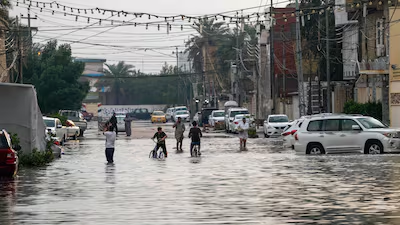
Heavy flooding in Iraq's central holy shrine city of Najaf in March 2023. AFP
Heavy flooding in Iraq's central holy shrine city of Najaf in March 2023. AFP
This weather phenomenon may explain UAE and Middle East's extreme flooding
Abu Dhabi scientists say atmospheric river rapids are becoming more common because of climate change


